by Beth Bolles | Dec 4, 2015
A visit to a nursery and homeowners will see so many new selections of plants for the landscape. Some of these plants are new plant developments and may include plants we could not previously grow in Florida’s heat and humidity. One new plant series is the Southgate® Rhododendrons.
Anyone from more northern areas of the South is very familiar with the rhododendrons that offer showy spring blooms. Those particular rhododendrons just don’t make it in our Florida climate.
The Southgate® series from Louisiana were developed to be more tolerant of our weather conditions. Homeowners must still consider plant placement very carefully since these plants have some specific requirements even in Florida. Plants will do best in shade or filtered shade, especially in the afternoon. They do like an acid soil amended with compost and areas that are well drained. Homeowners will need to supply water during the growing season to maintain a uniform soil moisture.
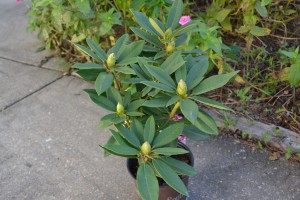
Rhododendron foliage with buds.
Consider trying one of these newer rhodendrons if your landscape has a suitable spot and you will definitely enjoy a bright spot of color come spring.
Special Note: If you have animals or children be cautious since all plant parts are toxic if ingested.
by Mary Salinas | Dec 4, 2015
The cooler weather in the wintertime makes it a great time to plant trees and shrubs. That is why Arbor Day in Florida is the third Friday in January. In 2016, that event is January 15.
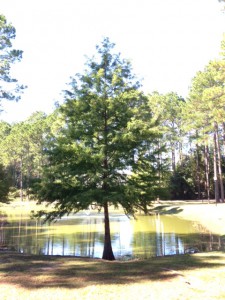
Baldcypress growing at the edge of a pond. Photo: Julie McConnell, UF/IFAS
Start your planning now with doing a site assessment on your landscape, then choosing the right trees and shrubs for your particular environmental conditions.
Here are some great sites that offer online tools for finding just the right species:
Florida Tree Selector
The Florida-friendly Guide to Plant Selection & Landscape Design
Florida Native Plant Society Locator
And if you want to find out just how much your established trees are worth, use this National Tree Benefit Calculator!
For more information:
Planting Trees in the Landscape
Arbor Day Foundation: Florida
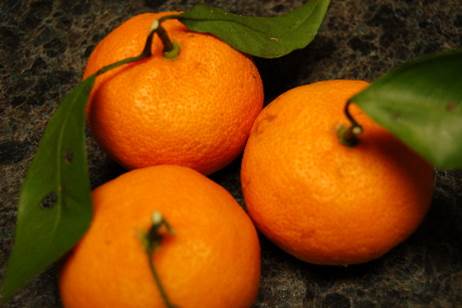
by Matthew Orwat | Nov 24, 2015

Satsuma fruit, harvested with their stem intact to ensure longevity when stored. Image Credit: Dr. Pete Andersen
The satsuma mandarin (Citrus unshiu) is a popular dooryard fruit tree, and emerging crop, across the Florida Panhandle. 100-150 years ago it was a major cash crop for the region, with boxcar loads being shipped to the Northeast during the months of October-December. Due to a series of hard freezes in the 1950s and a shift in land use from produce production to timber, the satsuma industry was effectively dead in northwest Florida until recent years, when several entrepreneurial growers have invested time and effort in bringing back this delicious citrus to the commercial scene.
Throughout this time, many homeowners have enjoyed this historic citrus, dressing many a Thanksgiving table with its beautiful bright orange fruit. Satsumas contain few seeds, are generally sweet and very easy to peel. They are part of the mandarin group of citrus, and somewhat resemble canned mandarin oranges in shape and flavor. The cooler the fall temperatures (above freezing) the sweeter the fruit will be at harvest.
Mature trees are hardy down to 14-18 º F when budded to a cold hardy rootstock such as trifoliate orange or swingle. Young trees need to be protected from temperatures below the mid 20s, and fruit will be ruined if exposed to any freezing temperatures below “light frost” conditions. Commercial growers use protective techniques, such as microirrigation, to protect their fruit if freezing temperatures threaten harvest.
This Thanksgiving, if you do not have a satsuma tree of your own, seek out a local producer and buy a case of satsumas for the holiday season !
For more information on growing and harvesting satsuma mandarins consult “The Satsuma Mandarin – HS195“, produced for your benefit by UF / IFAS Extension.
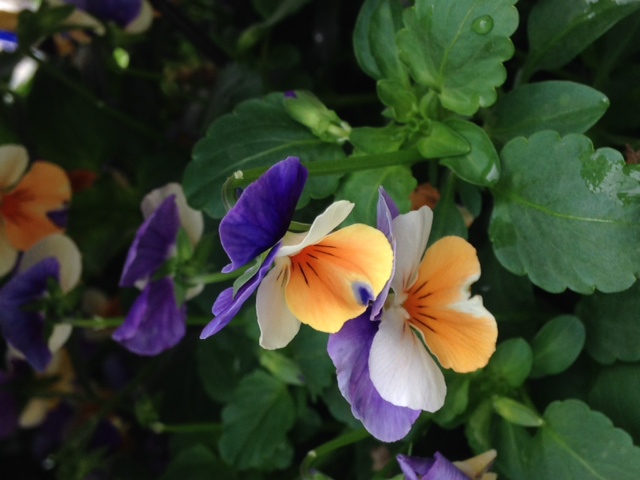
by Julie McConnell | Nov 24, 2015
 You may have heard “group plants with similar needs together” but struggled to come up with some combinations that work. The most important things to consider when creating functional garden space is the cultural needs of the plants you want to combine. Sunlight, water, and fertilizer needs should be very similar when planting multiple plants together. For fall and winter gardens, choose annuals that are frost tolerant and/or evergreen perennials.
You may have heard “group plants with similar needs together” but struggled to come up with some combinations that work. The most important things to consider when creating functional garden space is the cultural needs of the plants you want to combine. Sunlight, water, and fertilizer needs should be very similar when planting multiple plants together. For fall and winter gardens, choose annuals that are frost tolerant and/or evergreen perennials.
Here are some plants that work well together in cool weather:
- Strawberries and romaine lettuce – both are cool season annuals that can be planted in late October or early November. The lettuce can be harvested from outside leaves after growth begins or let it form a head and cut the entire plant. Strawberries will spread out but remain fairly low growing compared to the upright lettuce. These plants combine well in a container if given room to expand.
- Rosemary and oregano – these culinary herbs thrive in sunny, well-drained spots. Rosemary is an upright woody perennial and oregano spreads along the ground making a fragrant groundcover for a tough spot.
- Snapdragons, pansies, and parsley – this combination gives foliage contrasts in addition to colorful flowers. This combination will work in full sun or a slightly shaded spot in th
 e garden. In the spring, replace the snapdragons and pansies for warm season annuals for continued color.
e garden. In the spring, replace the snapdragons and pansies for warm season annuals for continued color.
- Cabbage, cauliflower, and strawberries – all cool season edible crops that have attractive foliage and similar needs.
- Snapdragons, violas, and petunia – this colorful combination has three height levels of tall snaps, bunching violas, and trailing petunias.
To learn more about these plants and other options Growing Strawberries in the Florida Home Garden, Herbs in the Florida Garden, and Gardening with Annuals in Florida.
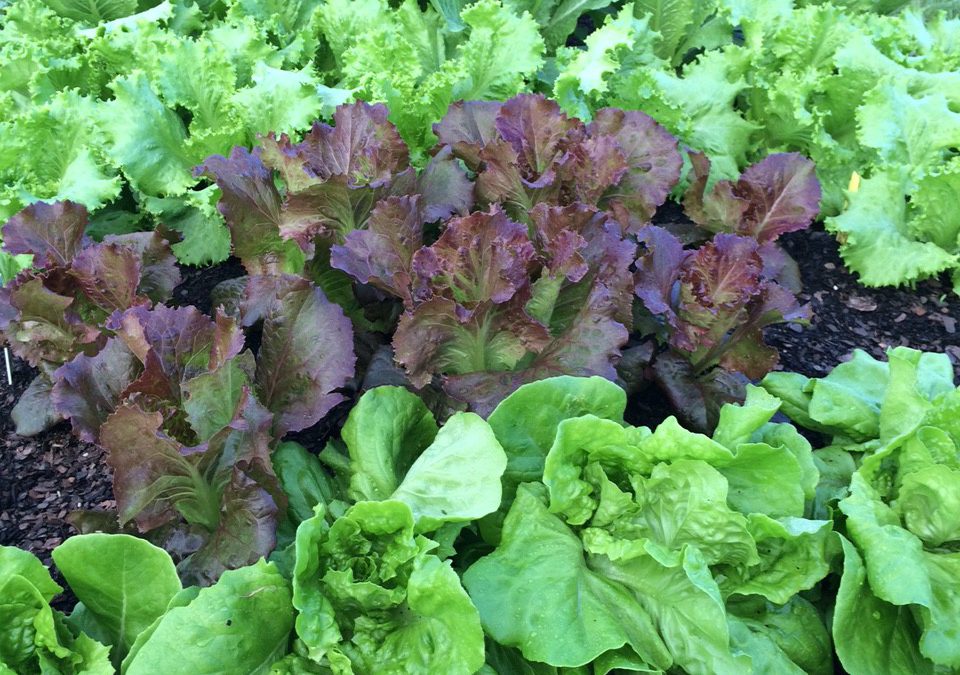
by Molly Jameson | Nov 24, 2015
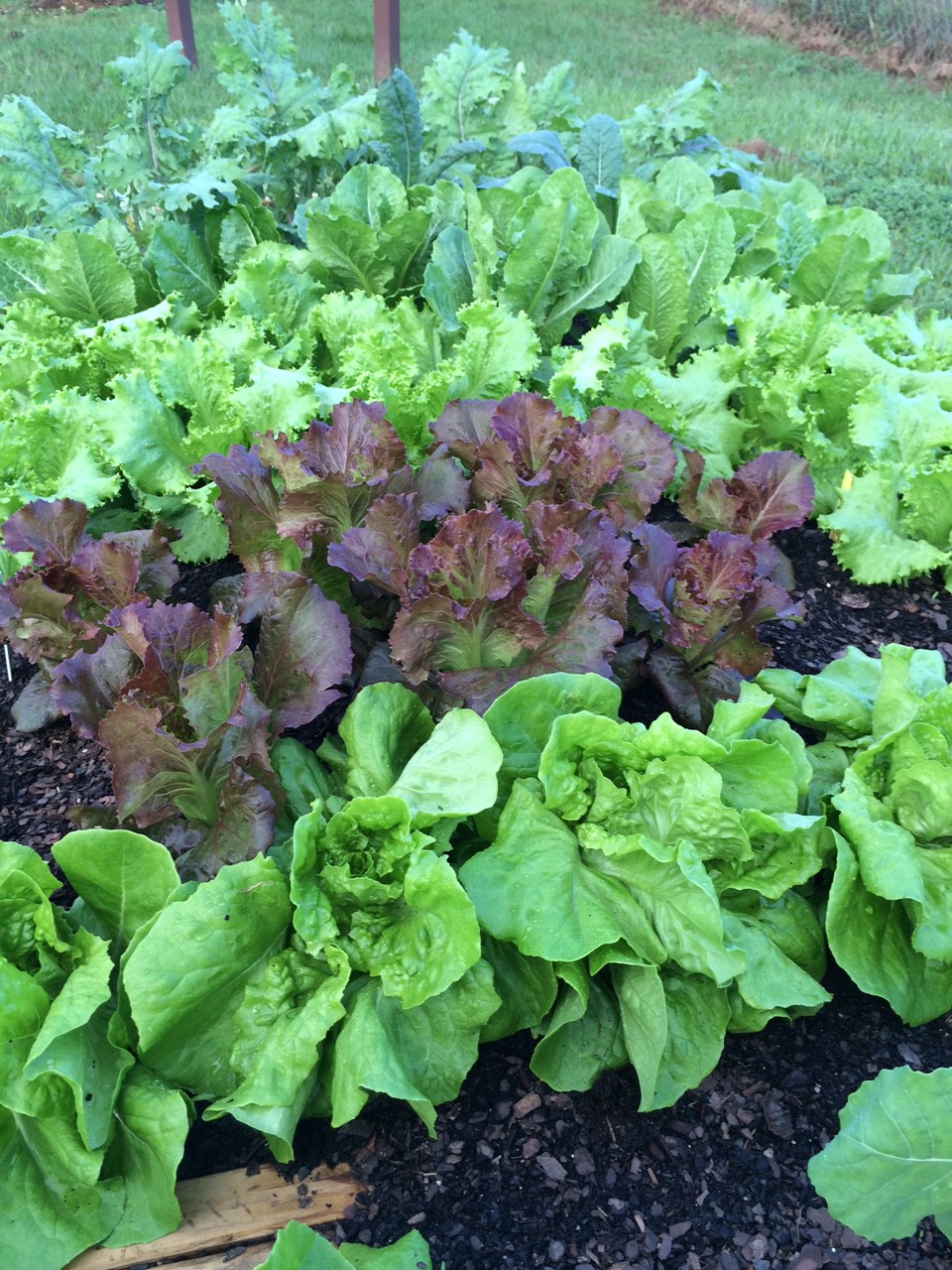
Kale, mustard, and lettuce in fall garden. Photo by Molly Jameson.
In North Florida, December can mark the peak in fall vegetable gardening. Early lettuce varieties are beginning to head and your later varieties are coming on strong. Radishes are starting to erupt out of the ground, and leafy greens are producing big beautiful leaves. But did you know that simple changes in how you harvest can greatly increase the longevity of your fall garden?
Here are a few harvesting tips for stretching out the fall harvest to ensure you will have plenty of greens all the way into spring:

Plant radishes and arugula as gaps form in fall vegetable garden. Photo by Molly Jameson.
- Harvest leaves often: Leafy vegetables and herbs often produce more leaves the more you pick them. Harvest the lower, oldest leaves of vegetables such as leaf lettuce, kale, collards, and Swiss chard often. Be sure to maintain two to three leaves per plant; this method will ensure tender, pest-damage-free leaves, while encouraging the plant to keep producing.
- Thin to eat: Plants such as arugula and spinach are excellent vegetables to seed heavily and thin to eat. Once the plants have produced their first few true leaves, harvest the whole plant and use the leaves in salads. Continue this method until plants are about six inches apart, and then harvest leaves only. In this way, you will have salads filled with small tender leaves in the beginning of the season, and larger leaves for salads and cooking all the way into spring.
- Cut stems of florets high: Once your broccoli or cauliflower curds are ready to be harvested, cutting the stem high will often mean more secondary heads will form. Once your plants quit producing florets, start harvesting the leaves, which have great flavor and are highly nutritious. Also, with cauliflower, loosely tie the leaves around the curd. This forms a protective barrier from the sun and also improves color.
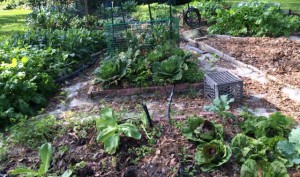
Assorted greens in fall vegetable garden. Photo by Molly Jameson.
- Harvest in the morning: Plant moisture and nutrient content are often highest in the morning. Once harvested, these leaves are less likely to wilt, and flavor will be preserved. Submerge or run cool water over the plants to maintain vigor. Alternatively, you can harvest in the evening if you plan to prepare the food that night.
- Fill in the gaps: Once you begin harvesting frequently, you will notice space begins to open up in your garden. It is often too early to plant cold-sensitive spring crops, yet you can continue to plant some quick growing fall vegetables, such as radishes and arugula. Sow these seeds as space opens up to maximize your food production until it is warm enough for the new season.
- Use materials to extend the season: By using frost cloth, low tunnels, cold frames, and shade cloth, you can protect your vegetables from early cold snaps and extend the season into spring. These materials, as well as wire and netting, can also protect your crop from deer, squirrels, and rabbits.






 e garden. In the spring, replace the snapdragons and pansies for warm season annuals for continued color.
e garden. In the spring, replace the snapdragons and pansies for warm season annuals for continued color.


